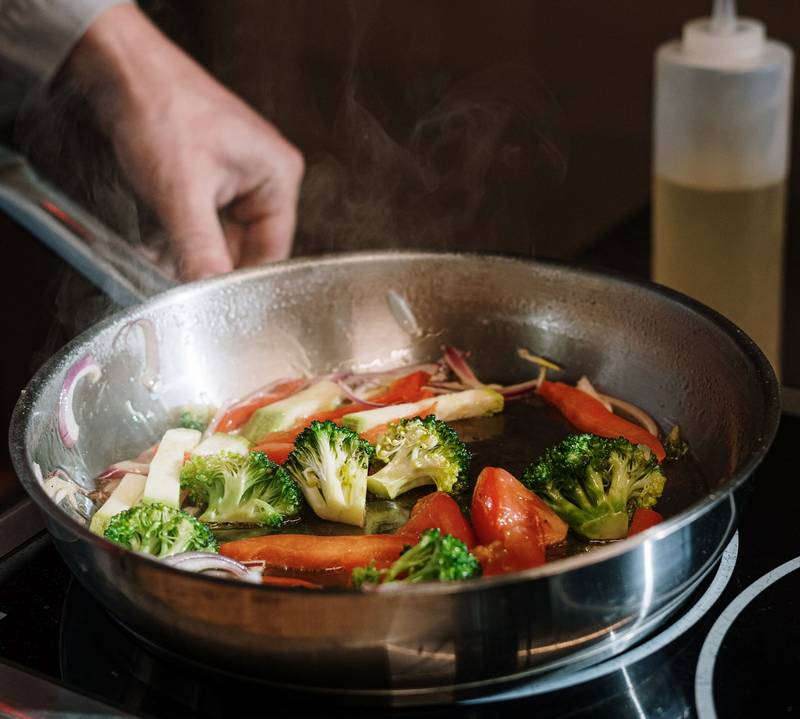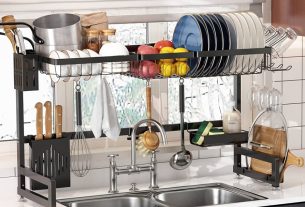Almost all the delicious meals you cook should have vegetables included in them. Vegetables are cheap, abundant, delicious, and good for health. There are times where you cooked a little too much or you get over-zealous when you are preparing dinner or lunch and you are left with a lot of leftovers.
Irrespective of your reason for making leftovers of steamed vegetables, you will need to know how you should reheat them when you are ready to use them. You can reheat steamed vegetables either in an oven, a microwave, or on a stove. If you want to make sure that the taste is retained and that it does not turn to mush, you have to follow some reheating tricks.
Reheating Steamed Vegetables on a Stove
Your steamed vegetables can be reheated on a stovetop and it can be done within a few minutes. This process will also help you to keep the texture and flavor of the vegetables. The trick is not to re-steam the vegetables because that would get them soggy and too soft.
What you will do is to put the steam vegetables into a little oil that you have heated inside your frying pan under low-medium heat. This will prevent it from getting overcooked. Toss your vegetables around the pan for some minutes to ensure they are evenly heated. If you want some additional flavor, add squeezed lemon juice to it.
Reheating Steamed Vegetables in an Oven
Steamed foods are generally not recommended to be heated inside an oven because they do not heat well. However, an exception to that rule is steamed vegetables. All you have to do is allow them to be reheated under low heat with the temperature of the oven kept in the range between 200°F and 250°F so that they will not be heated too fast, thus becoming mush or get burnt.
You need to protect your vegetables from turning soggy and also from drying out by using foil to cover them until some minutes towards the end of the reheating process. Also, remember you should not overfill your baking tray but instead evenly spread out the vegetables on it so that they will not become soggy.
Reheating your steamed vegetables inside an oven should not take you more than 10 minutes. It is quicker to heat vegetables than to heat meat, so ensure you check them in intervals of minutes. Don’t forget to take off the foil just minutes before the end of the process.
Reheating Steamed Vegetables inside a Microwave
This is the fastest and quickest way to reheat your steamed vegetables is to do it inside the microwave. You are not to allow them to stay inside your microwave for a longer time to overcook. However, they should be left inside long enough for them to become warm.
Every microwave has a different power level, the standard temperature to heat your steamed vegetables inside the microwave is 165°F. You can use your thermometer (food) to check the temperature when you are heating it.
Use plastic wrap to cover your steamed vegetables when you want to reheat them inside the microwave. The plastic wrap will prevent extra moistures from escaping the vegetables, acting as your steam mechanism. This will allow the vegetables to be kept tasty and all their health benefits will also be intact.
How To Store Steamed Vegetables To Reheat Later
If you want the steamed vegetables to taste great after you reheat, you need to properly store them. It will not be too good pouring them on your dinner plate and putting them inside the refrigerator. You need to take more caution. Check below for some of the steps you need to follow when you want to store the steamed vegetables inside the fridge:
- Remove them from your steamer quickly. It is ideal to remove them from the steam some minutes before they become fully cooked if you have made up your mind to store and reheat them later. They will be left al dente as well as ensured that they are not too soft by the time you reheat them.
- Use a very big shallow dish if you have a lot of steamed vegetables. This will allow the dissipation of the heat quicker and your vegetables will become cool at a quicker time. Moreover, it will prevent them from getting cooked further.
- Don’t leave out steamed vegetables for too long, neither should you allow them to be out overnight.
- Ensure that you allow them to become completely cooled before you place them inside the refrigerator. The temperature in the fridge could be raised if you put the vegetables when still hot and this will allow bacteria to have a breeding area.
- You should use either freezer bags or lidded containers to store the steamed vegetables. If you want to save some space inside the refrigerator, use the freezer bags because they can stay standing up or flat.
- Ensure your steamed vegetables are kept away from some other foods such as seafood, dairy, eggs, poultry, and raw meat. Avoid cross-contamination because this may cause food poisoning.
- Only put the steamed vegetables inside the refrigerator if you will be eating them within one or two days. If it is later than that, just put them inside a freezable container or freezer bag and freeze them.
Why Steamed Vegetables Are Better
You can cook vegetables in a variety of ways but some of them are more beneficial when compared to others. A common method you can use to prepare your vegetables is steaming and there a several good reasons behind it. Check them below:
Time-Saving
You will not take too much time when you steam your vegetables. You can steam your vegetables within some minutes using the microwave or stove if you have already started with boiling water. It also has something to do with the kind of vegetables you want to steam, cauliflower and broccoli usually take a longer time than other vegetables like peas and spinach. However, they will all be done within 10 minutes.
Texture
If you want the crunchy texture as well as the vibrant color of your vegetables to be retained, steaming them is how you can ensure that. Once you can time the process, there won’t be a risk of the vegetables being bland, overcooked, and the color dull.
Less Waste
About 20 to 50% of the vitamins and minerals of vegetables will become wasted when you boil them in water. You can reduce the waste by at least half when you steam your vegetables.
Related Questions
Reheating Steamed Vegetables
If you want to ensure that all the vitamins and nutrients contained in the vegetables are intact, steaming them is the best way to prepare them. Vegetables are definitely good for everyone. You can either reheat steamed vegetables in an oven, a microwave, or a stove. Ensure you don’t overheat the vegetables because it will lead them to be too soft and soggy. You will become healthier when you steam your vegetables and reheating them is a very easy task to do. You can enjoy your lunch this way!!!
How can I thaw frozen steamed vegetables?
Steamed vegetables can be thawed from frozen in three (3) different ways:
- Thaw your frozen vegetables inside the microwave by setting it to defrost function under low power. It is a very quick method but your vegetables could end up being soggy.
- Immerse your frozen vegetables contained inside a freezer bag into cold water. Ensure you change the water in 30 minutes interval until it completely thaws.
- Put your frozen vegetables inside the refrigerator overnight and allow them to defrost. This process is slow but it is very safe ensuring the vegetables are in the safest condition.
How long can I keep steamed vegetables in the fridge?
You can allow your steamed vegetables inside the refrigerator for about 2 days. Store it inside the freezer if you will like to keep it for a longer time than stated. Ensure you do not allow them to have contacts with some other foods inside the refrigerator most especially dairy, eggs, poultry, and raw meat.

Is it safe to eat reheated vegetables?
You can safely eat reheated steamed vegetables in as much as you have kept them inside the refrigerator, they are yet to spoil and have been properly reheated.
Can I reheat spinach?
It could be a bit trickier reheating spinach than when you reheat other types of steamed vegetables. Generally, spinach often wilts and quickly reduces, reheating it could become a mess. You can eat your leftover spinach in two ways:
- Add it to a casserole or pasta salad towards when you will end the cooking.
- Eat your spinach cold. You can deliciously enjoy it with lemon juice.
If you either eat it cold or heat it to be added to some other ingredients when you are cooking a casserole or pasta salad, then your spinach will not become soggier than you have it.


